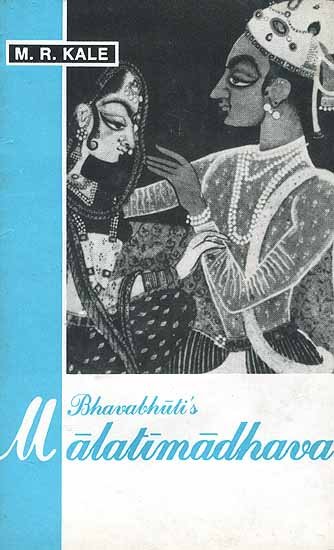Malatimadhava (study)
by Jintu Moni Dutta | 2017 | 52,468 words | ISBN-10: 8120813057 | ISBN-13: 9788120813052
This page relates ‘Definition of Alamkara (figures of speech)’ from the English study on the Malatimadhava of Bhavabhuti:—A Prakarana type of Drama in ten acts revolving around the love-story of Malati (from Padmāvatī) and Madhava (from Vidarbha). This study discusses the history of its author and the literary, social, religious, historical and cultural aspects of the Malatimadhava.
Part 2.1 - Definition of Alaṃkāra (figures of speech)
Alaṃkāra is an impotant element of poetry. It is defined by various rhetoricians in their works.
Bhāmaha, the foremost representative of alaṃkāra says that a lady, though naturally beautiful, her beauty does not shine without ornament.[2]
Similarly, Vāmana also laid great stress on the utility of alaṃkāras by asserting boldly that a poem is to be accepted for its embellishment. [3]
Daṇḍī, appears to use the word alaṃkāra in a wide sense. According to him the properties which increase the beauty of a kāvya are called alaṃkāra.[4]
Mammaṭa paid great importance to the alaṃkāra by incorporating them in his definition of poetry. He opines that in which way the ornaments like necklace are essential to enhance the beauty of a lady like that the alaṃkāras are essential factors in creating rasa of a poem by beautifying either words or sense.[5]
Another rhetorician, Ᾱnandavardhana, remarks that the alaṃkāra is the cause of beauty. Again, he says that alaṃkāra because of its similarity with the external ornaments is the cause for the excellence of rasa.[6]
Viśvanātha Kavirāja opines those properties of word and sense which enhance the beauty and brilliance of rasa etc. just like a bracelet are stated as alaṃkāra.[7]
Types of Alaṃkāra:
In the Agnipurāṇa, three divisions of alaṃkāra are found viz.,
- śabdālaṃkāra (Figure of word),
- arthālaṃkāra (Figure of sense) and
- ubhayālaṃkāra (Mixure of both figures word and sense).[1]
Among these which decorates words adding splendid style is called śabdālaṃkāra [8] , which enhances the excellence of meaning is called arthālaṃkāra [9] whereas ubhayālaṃkāra equally increases the beauty of words and meaning in such a way that ornaments increase the beauty of breast and neck of a female wearer.[10] Alaṃkāra is identified with beauty itself, not as instruments of beauty. Therefore,to make beautiful verses the good poets have applied their minds in framing their verses in an embellished form.
Footnotes and references:
[1]:
alaṃkariṣṇavaste ca śabdamarthamubhautridhā Agnipurāṇa,342.18
[2]:
rūpakādiralaṃkārastathānyairvahudhoditaḥ /
na kāntamapi nirbhūṣam vibhāti vanitānanam /
Kāvyalaṃkāra,I.13
[3]:
kāvyaṃ grāhyamalaṃkārāt /saundaryamalaṃkāraḥ/
Kāvyālaṃkārasūtravṛtti,1.1.1,2 kāvyaśobhāyāḥ tadatiśayahetavastvalaṃkārāḥ /
Ibid.,3.1.2
[4]:
kāvyaśobhākarān dharmānalaṃkārān pracakṣate /
Kāvyādarśa, II.1
[5]:
upakurvanti taṃ santaṃ ye’aṅgadvāreṇa jātucit /
hārādivadalaṃkārās tenoprāsopamādayaḥ /
Kāvyaprakāśa,VIII.67
[6]:
alaṃkāro hi cārutvahetuḥ prasidhaḥ /
Dhvanyāloka,II.5.p.170 alaṃkāro hi bāhyālaṃkāra sāmyādaṅgīnaścārutva heturucyate /
Ibid., p.200
[7]:
śabdārthayorasthirā ye dharmāḥ śobhātiśāyinaḥ /
rasādīnupakurvantolaṃkārāsteaṅgadādivat /
Sāhityadarpaṇa, X.I
[8]:
ye byutpatyādinā śabdamalaṃkartumiha kṣamāḥ /
śabdālaṃkāramādhuratān kāvyamimaṃsakavidaḥ //
Ibid
[9]:
